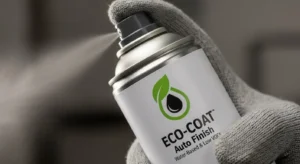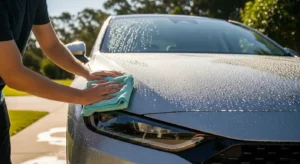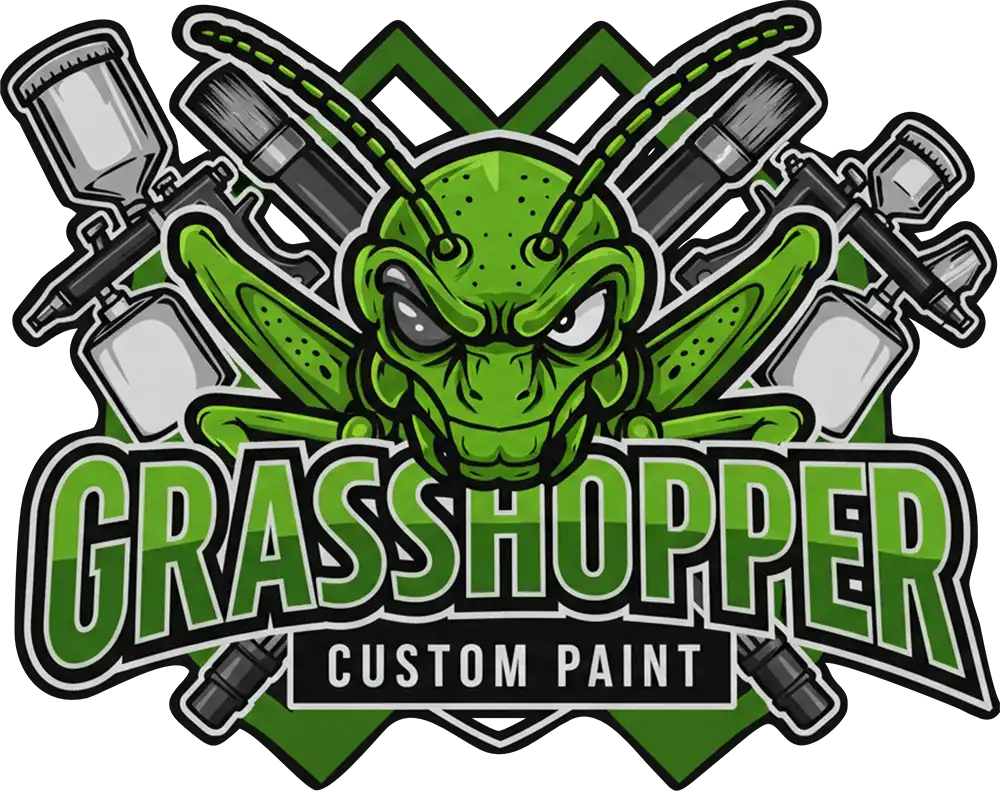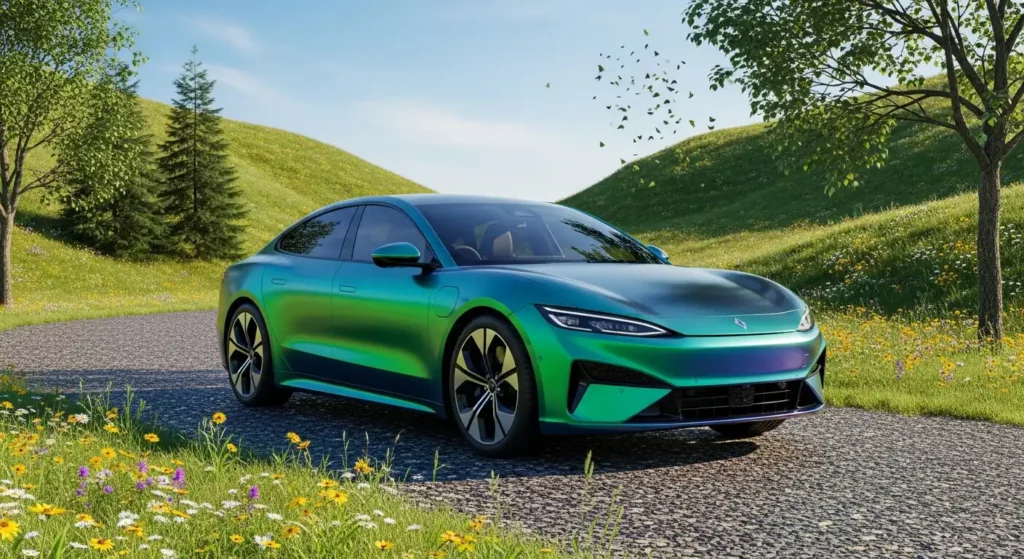The world of automotive customization is evolving quickly, and 2025 is shaping up to be the year where eco-friendly auto paints take center stage. Gone are the days when custom paint jobs meant harmful fumes and heavy environmental impact. Today, thanks to advances in paint technology, drivers can embrace bold, unique styles while making environmentally responsible choices. From low-VOC formulas to waterborne finishes, sustainable paints are becoming a cornerstone of the custom car industry.
Why Sustainability Matters in Custom Auto Painting
As environmental regulations tighten and consumer awareness grows, sustainability is no longer optional—it’s a necessity. Traditional solvent-based automotive paints release volatile organic compounds (VOCs) into the atmosphere, contributing to smog and health risks for both painters and car owners. Eco-friendly alternatives help reduce this footprint without sacrificing quality or vibrancy.
For many enthusiasts, sustainability also aligns with personal values. Choosing eco-friendly paints allows them to enjoy show-stopping designs while feeling confident that their customization isn’t harming the planet.
What Makes a Paint Eco-Friendly?
 Eco-friendly paints are defined by their low environmental impact, from production to application. Key features include:
Eco-friendly paints are defined by their low environmental impact, from production to application. Key features include:
- Low-VOC Formulas: These paints drastically reduce the emission of toxic compounds into the air, making them safer for both the environment and people.
- Waterborne Paints: Instead of harsh solvents, these paints use water as the primary carrier, resulting in fewer pollutants and easier cleanup.
- Biodegradable and Recyclable Components: Some new paints incorporate biodegradable resins or recyclable materials, offering an even greener alternative.
- Energy Efficiency: Many sustainable paints require lower curing temperatures, cutting down on energy use in paint booths.
Popular Eco-Friendly Options in 2025
Several types of eco-friendly auto paints are gaining momentum this year:
- Waterborne Basecoats: Highly favored in Europe and increasingly popular in the U.S., these paints provide vivid colors with significantly fewer emissions.
- Low-VOC Clear Coats: Designed to seal and protect custom finishes without heavy solvent release.
- Powder Coatings for Parts: While not traditional paint, powder coatings offer a durable and sustainable option for wheels and trim.
- Hybrid Paint Systems: Blending conventional performance with eco-friendly components, these are a practical stepping stone for many shops.
Why Eco-Friendly Paints Are Trending in Custom Work
Several factors are driving the surge of eco-friendly paints in custom shops like Grasshopper Custom Paint:
- Regulatory Pressure: Cities and states are introducing stricter environmental rules, making eco-friendly compliance a smart business move.
- Consumer Demand: Car enthusiasts are increasingly looking for ways to express themselves without compromising sustainability.
- Technological Advances: Modern eco paints now rival—or surpass—traditional paints in durability, finish, and color depth.
- Brand Reputation: Shops that adopt sustainable practices stand out as innovators and leaders in the industry.
Applications at Grasshopper Custom Paint
At Grasshopper Custom Paint, we’ve seen firsthand how eco-friendly paints can be both stylish and responsible. For example, our team has experimented with waterborne metallics that shimmer under sunlight while meeting low-emission standards. Matte finishes created with low-VOC coatings have also become popular, providing a sleek modern look with a reduced environmental footprint.
These new finishes can be applied to a wide range of projects, from full vehicle resprays to detailed airbrush work. Imagine a retro mural recreated with biodegradable clear coat, combining artistry with sustainability. It’s a balance of creativity and conscience.
Maintenance Tips for Eco-Friendly Paint Jobs
 Maintaining an eco-friendly finish is similar to traditional paints, but with some considerations to ensure longevity:
Maintaining an eco-friendly finish is similar to traditional paints, but with some considerations to ensure longevity:
- Gentle Cleaning: Use eco-friendly car shampoos and soft microfiber cloths to avoid scratches.
- Avoid Harsh Solvents: Some cleaners can compromise the integrity of waterborne paints—stick to mild, paint-safe products.
- Protective Coatings: Ceramic coatings or waxes designed for low-VOC paints can extend durability and gloss.
- Storage: Keep vehicles covered or garaged when possible to minimize UV exposure and weathering.
Challenges and Considerations
Like any innovation, eco-friendly paints come with challenges:
- Cost: Sustainable materials may carry higher upfront prices, though long-term benefits often outweigh them.
- Application Learning Curve: Waterborne paints, for example, require different spray techniques and humidity control in booths.
- Availability: Some specialty colors may be harder to find in eco-friendly formulas, though this is improving rapidly.
Despite these hurdles, the industry consensus is clear: eco-friendly paints are the future, and those who adopt early will be better positioned for success.
Eco-Friendly Paints vs. Traditional Finishes
For those weighing the pros and cons, here’s a quick comparison:
| Aspect | Eco-Friendly Paint | Traditional Paint |
|---|---|---|
| Environmental Impact | Low emissions, safer disposal | High VOCs, toxic waste |
| Durability | Excellent with proper application | Excellent, but more hazardous |
| Cost | Slightly higher upfront | Often lower initially |
| Application | Requires updated techniques | Familiar to most painters |
Looking Ahead
With environmental concerns at the forefront of global discussions, the rise of eco-friendly auto paints is more than a passing trend—it’s the new standard. By 2030, it’s likely that sustainable paints will dominate both OEM and custom markets. For car enthusiasts, that means more options for stylish, responsible personalization. For shops, it’s a chance to lead in innovation while contributing to a cleaner planet.
Conclusion
Eco-friendly paints prove that you don’t have to compromise style for sustainability. From dazzling metallics to sleek matte finishes, today’s low-VOC and waterborne paints offer the same—or even better—results than traditional options. Yes, they require investment and adaptation, but the benefits to the environment, health, and long-term industry growth are undeniable.
If you’re considering a custom project in 2025, why not make it green? At Grasshopper Custom Paint, we’re proud to help clients create jaw-dropping designs with eco-friendly materials—ensuring your ride looks amazing while treading lightly on the planet.
Key Takeaways
- Eco-friendly paints like low-VOC and waterborne options reduce emissions without sacrificing quality.
- They’re trending in 2025 due to regulatory pressure, consumer demand, and technology advances.
- Maintenance requires gentle products, but durability rivals traditional finishes.
- Shops adopting sustainable paints are leading the future of customization.

